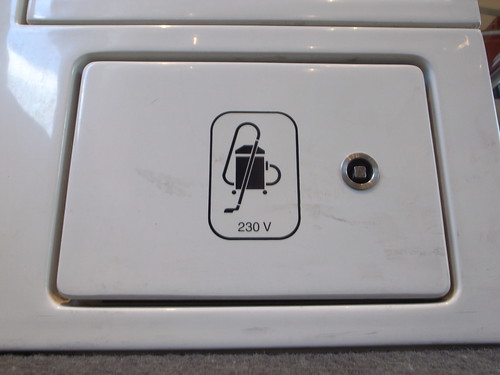Some notes taken after viewing the LIFT07 talk of Sampo Karjalainen (Sulake Corporation): "Open-ended play in Habbo" (video).
Sampo described how Habbo is a virtual hang out for teenagers, an open environment in which you can do things, no clearly explicit goal. A bit like Second Life but browser-based (more accessible) and not in 3D, it targets teenagers. Figure are quite amazing: 7millions unique users every month, medium age: 13y.o. gender distribution: almost 50/50.

What I found pertinent is the spatial aspects of Habbo Hotel. Sampo differentiated the following "spaces".
1) Public rooms: designed by Sulake, most of the users go here, chat online with existing friends, meet new friends and "be together"+ Games inside Habbo Hotel compete/cooperate: gaming rooms, kissing booth, photobooth (polaroid-like), changing room (exchanging you clothes as quickly as possible) with the rules of the games usually explained as sticky notes on the walls.
2) User-created rooms: the most intriguing aspect and the one that makes users come back:: user's own room: every user can create their own room (design, furnitures, pets, rare items bought with habbo credits) and people express themselves. So there are also wharehouse in which people store collected items (so that the value of the items then goes up).
Some activities emerged: virtual horsetable (people dress up in brown, black... play the horse and the other ones take care of them... they type in chat what they are doing "I am burshing you...", they kind of roleplay, we did not provide any items to support this but they do it), adoption houses (rooms in which you can get adopted by another user and people the role of mothers and child).
3) Activities expand outside habbo:
- traders go to online auction like ebay or in schoolyards,
- community websites (writing articles about what is going on, values of items, some user-created games). Sulake tries to support this: helping people to set their own webpage
Then he described some guidelines to have this "open ended play". His point is that users do create lots of interesting content for other users. It is a source of new stuff every hour every day and Sulake would not be able to create so many things. The strategy was rather to provide tools for people. How can we design to support this type of play? what is needed to support it?
Some practical ideas:
1) you need something to play with, some type of objects/type of environment. Not necessarily huge amount of items but rather the possibility to combine them in various ways. (Examples: Mii, Legos, chats)
2) intuitive interaction: if you enable the user to move and rotate/edit, it supports the play much better than what we have in classic interaction with a browser. It's also good to keep the user interface very invisible (to not cut the flow of play).
3) set up a mood for play: nobody will laugh if you do sth stupid, it should be less utilitarian
4) foster all kind of user-create goal. traditional games tend to have one dimensional goals but here it's much more interesting if the user select what he/she wants to create. The range of things that can emerge is then higher
5) still define and test likely use-cases: you need to have some ideas of things you expect to see, and test them
6) the shared social setting: it becomes much more interesting when people can comment on things created by others (for the creator and the others).
Why do I blog this? Working on some future project ideas, these insights from Sulake are very relevant in terms of studies that concern spatialities in virtual worlds. It makes me think of practices in MOO back in the 90s.






 (Picture taken from
(Picture taken from 





